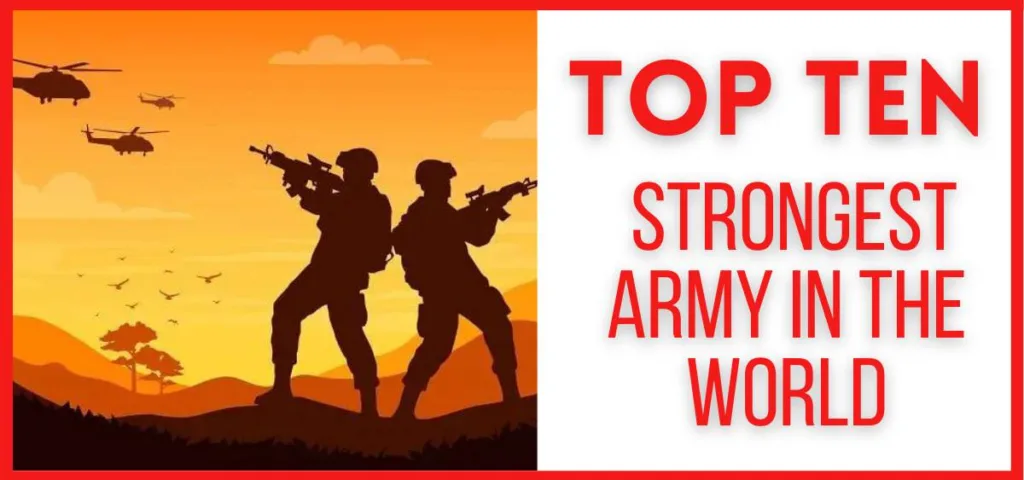The pursuit of military might has been a cornerstone of human history, shaping civilizations and determining the course of nations. Today, the global stage is dominated by a handful of countries boasting the most formidable armed forces. These nations invest heavily in their militaries, leveraging advanced technology, strategic alliances, and skilled personnel to maintain their position as global powers. The concept of the “Strongest Army” is a complex one, influenced by factors such as military size, equipment, training, and overall defense capabilities. While it’s challenging to definitively rank armies, certain nations consistently stand out as possessing exceptional military strength. In this blog post, we’ll delve into the top ten armies in the world, examining their key attributes and contributing factors to their dominance. Their military capabilities play an important role in shaping international relations and global security strategies. The list of the top 10 powerful countries in the world is discussed below in this article, along with the position of India in terms of military strength.
Global Military Ranking System
Let us see which countries are the most powerful in terms of the military with the help of a ‘Global Military Ranking System’. The global military ranking, as determined by Global Firepower (GFP) and expressed through the PowerIndex (PwrIndx), offers valuable insights into the military capabilities of nations worldwide. This ranking is based on a detailed assessment of over 60 different factors that encompass various aspects of a nation’s military strength.
- The PowerIndex (PwrIndx) is a numerical score that represents a country’s overall military prowess.
- A lower PWRIndx score indicates a stronger military. Hence, a perfect PwrIndex value would be 0.000, which the GFP says is realistically unattainable.
- This unique scoring system takes into account a wide range of factors, including the quantity and capability of military units, financial resources allocated to defense, logistical capabilities, geographical factors, and more.
One of the remarkable features of GFP’s ranking is its ability to level the playing field. Smaller nations with advanced military technologies can compete on the same platform as larger, less technologically advanced countries. This equitable approach allows for a more nuanced understanding of military capabilities across the globe.
The GFP ranking is dynamic and evolves annually. The inclusion of special modifiers, like bonuses and penalties, further refines the ranking. These modifiers consider factors such as changes in military strategies, geopolitical shifts, and updates to the GFP formula itself. In the 2023 GFP review, a total of 145 nations are evaluated and ranked based on their military strength.
Military Might: Top Ten Strongest Army in the World
In a complex world where power dynamics shape global affairs, the phrase “Top Ten Strongest Army in the World” carries immense weight. This article delves into the elite military forces that command respect and influence on the global stage.
1. United States
- Defense Budget: Approximately $770 billion
- Active Military Personnel: Over 1.3 million
- Aircraft Carriers: 11
- Nuclear Warheads: Estimated 5,800
The United States Armed Forces are a global military powerhouse with unparalleled capabilities. With a defense budget that surpasses that of most nations combined, the U.S. military invests heavily in cutting-edge technology. Recent advancements include the integration of artificial intelligence (AI) in military operations and the expansion of the Space Force, solidifying the U.S.’s dominance in modern warfare.

Holding the top position, the United States commands the most potent military force globally. With a power index of 0.0712, according to Global Firepower, it demonstrates unparalleled capabilities in defense technologies and armed forces. As of April 2023, the United States holds a prominent position worldwide, leading from multiple crucial perspectives. This includes its estimated air fleet size, the quantity of vessels in its arsenal, and the strength of its transport task force. The nation’s military arsenal comprises 92 warships, 11 aircraft carriers, 13,300 aircraft, and 983 assault helicopters. Additionally, the United States boasts the largest defense expenditure advantage.
2. Russia
- Defense Budget: Approximately $65 billion
- Active Military Personnel: Around 1 million
- Tanks: Over 12,000
- Hypersonic Missiles: Developing a diverse range
Russia’s military strength stems from a long history of strategic thinking and technological innovation. Recent developments focus on upgrading its nuclear arsenal and enhancing air defense systems. Investments in cyberwarfare capabilities and the development of hypersonic missiles showcase Russia’s commitment to maintaining a formidable military presence on the global stage.

Closely in second place, Russia showcases robust military prowess, securing a power index of 0.0714. Its military strength, especially in terms of technology and weaponry, remains a global influence. By 2023, Russia will hold a commendable position in terms of its aircraft and naval strength. Despite facing challenges during the conflict in Ukraine, Russia maintains a robust navy. The calculated strength score, positioning Russia in the global scenario, stands at 0.0714. With an impressive number of aircraft, totaling approximately 4,100, Russia remains a significant player in the global military landscape.
3. China
- Defense Budget: Approximately $250 billion
- Active Military Personnel: Over 2 million
- Navy Ships: Over 350
- Cyber Warfare Personnel: One of the largest contingents
As a rising military giant, China allocates substantial resources to modernize its armed forces. Recent advancements include the development of advanced missile systems, AI integration in military operations, and the expansion of its naval capabilities. China’s assertiveness in the South China Sea reflects its ambition to establish itself as a dominant maritime force.
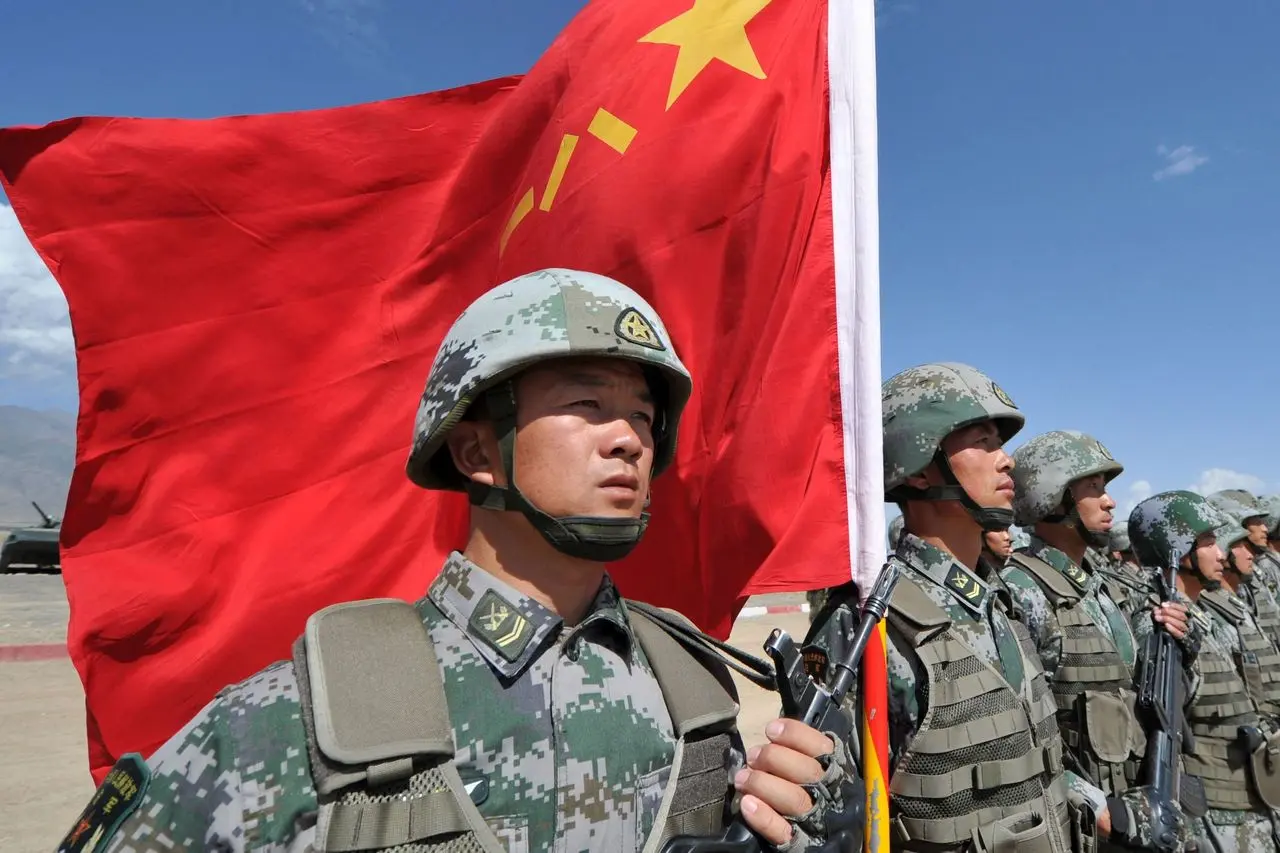
Occupying the third spot, China boasts significant military might with a Power Index of 0.0722, signifying its vast defense capabilities and evolving strategic advancements. As of April 2023, global reports suggest that China’s military authority extends to over 761 million individuals, portraying remarkable control. Additionally, China possesses an array of military resources, including 50 large warships and 78 submarines. Evaluations by experts assign a strength score of 0.0722 to represent the robustness of China’s military capabilities.
4. India
- Defense Budget: Approximately $80 billion
- Active Military Personnel: Over 1.3 million
- Fighter Jets: Over 600
- Ballistic Missiles: Developing a robust arsenal
India’s military strength is characterized by a focus on both regional security and technological advancements. Recent developments include the successful test of anti-satellite weapons, advancements in missile technology, and a commitment to indigenous defense production. India’s military modernization efforts reflect its intent to be a major player in the Asian security landscape.
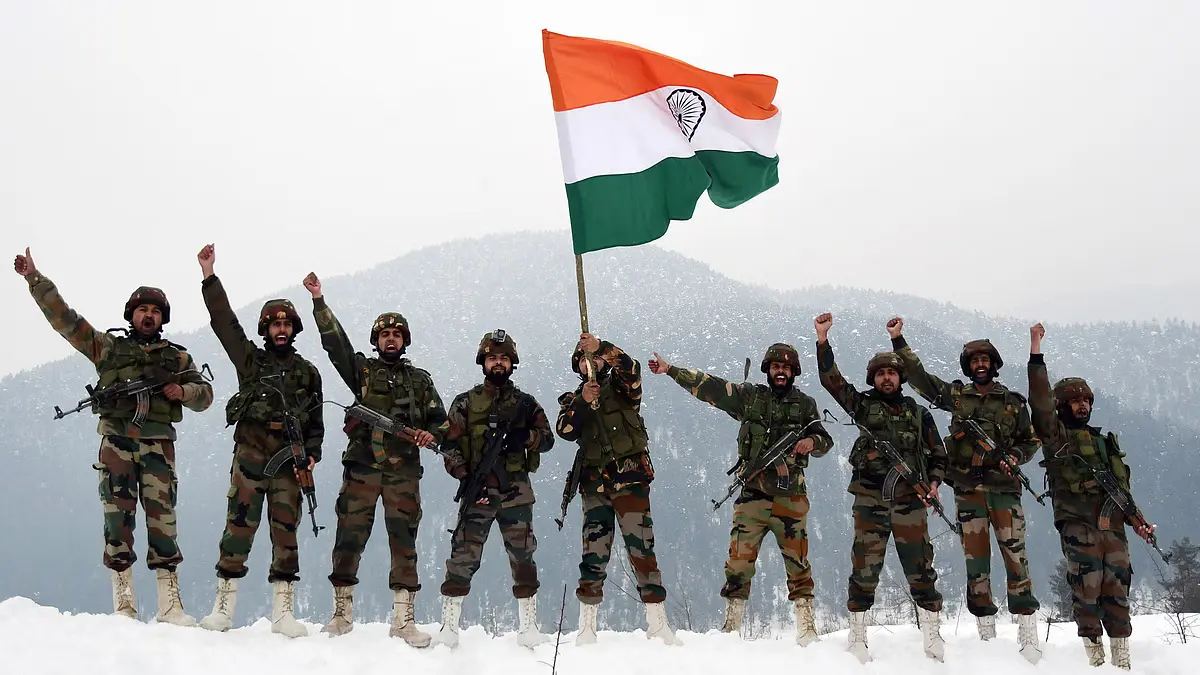
Making an impressive mark in fourth place, India exhibits substantial military strength, attaining a Power Index of 0.1025. India’s armed forces demonstrate exceptional growth and a strong defense infrastructure. India’s influence is established through its substantial population figures. In the assessment conducted by Global, India secured a prominent position due to its available manpower, an active and diverse military workforce, and the quality of paramilitary resources. As of January 2023, the report indicated that India’s available manpower exceeded 653 million individuals, making up 47% of the nation’s population. Additionally, the report highlighted India’s maintenance of a force comprising approximately 1.5 million active military personnel. As per the assessment, India obtained a Power Index score of 0.1025.
5. United Kingdom
- Defense Budget: Approximately £48.5 billion
- Active Military Personnel: Around 150,000
- Queen Elizabeth-class Aircraft Carriers: 2
- Nuclear Warheads: Approximately 195
Despite its relatively smaller size, the UK maintains a strategic military presence. Recent efforts include the introduction of the Queen Elizabeth-class aircraft carriers, enhancing its naval capabilities. The UK’s commitment to NATO and its active role in international peacekeeping operations underscore its influence in global security affairs.
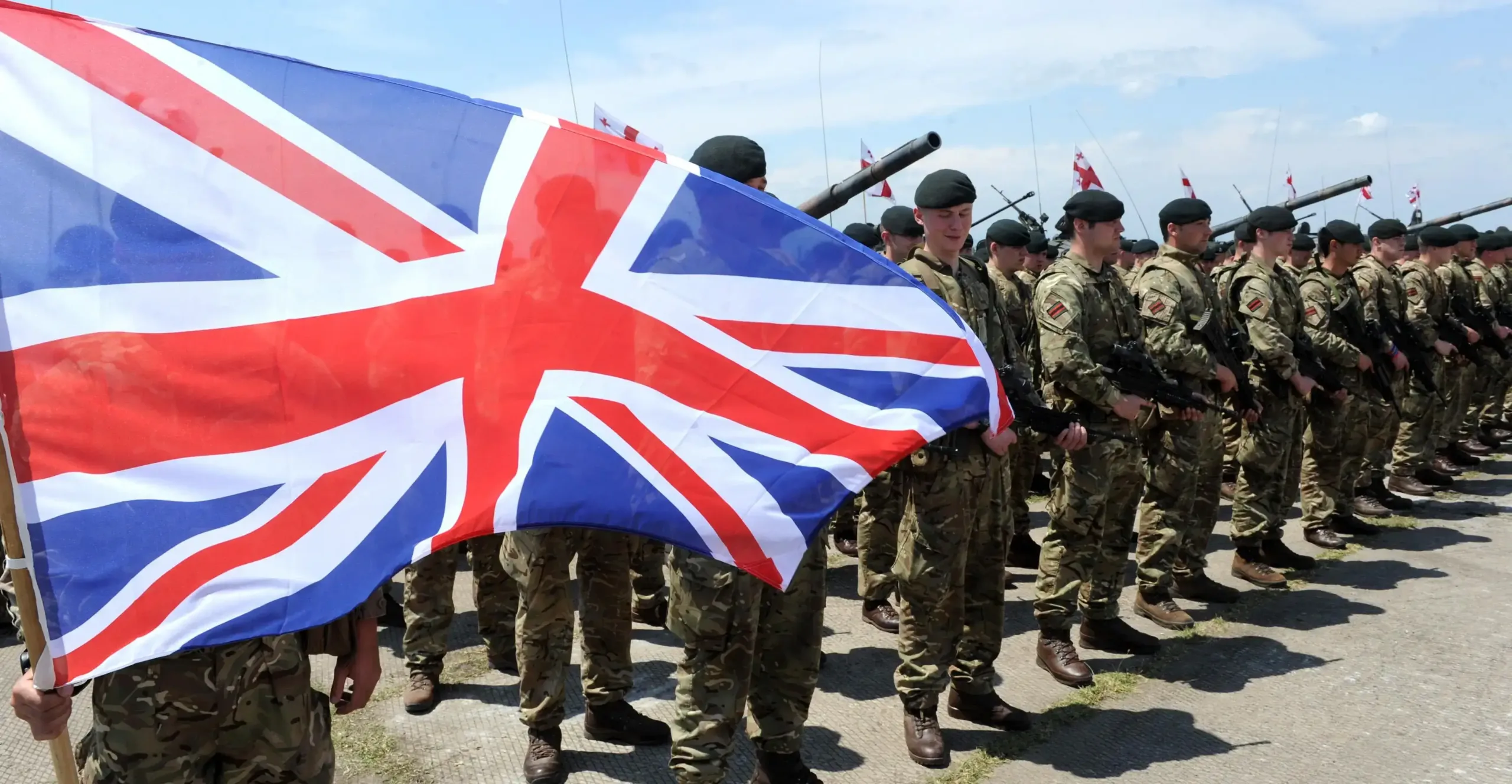
Holding the fifth position, the United Kingdom maintains a notable military force with a Power Index of 0.1435, reflecting its consistent defense investments and strategic capabilities. Currently, the UK possesses two aircraft carriers, a figure that aligns with those of China, Italy, and India, yet is notably fewer than the 11 carriers operated by the US. In various aspects, including its overall count of accessible ports and the quality of its aerial tanker aircraft fleet, the UK secured a place among the top 10 nations in the assessment conducted by Global. This evaluation resulted in the country attaining a Power Index score of 0.1435.
6. France
- Defense Budget: Approximately €41.5 billion
- Active Military Personnel: Around 280,000
- Cyber Security Budget: Increasing investments
- Fighter Jets: Over 200
France’s military strength is a blend of technological sophistication and proactive international involvement. Recent investments focus on cyber capabilities and strategic airlift capabilities. France’s military engagements in counter-terrorism operations across Africa showcase its commitment to addressing global security challenges.
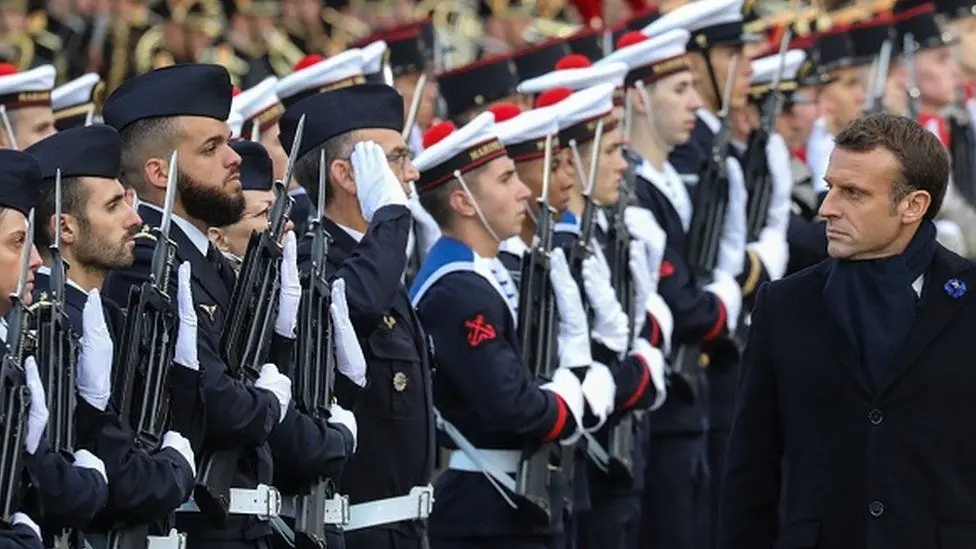
It continues to possess a formidable military, known for its strategic capabilities and global contributions. The country demonstrated proficiency in various aspects, encompassing its extensive fleet of aerial tanker planes, substantial helicopters, and a remarkable count of destroyer warships, all contributing to its overall robust military capability. As per the report, France maintains a fleet of 438 helicopters, including 69 assault helicopters. Additionally, the nation possesses a fleet of 10 destroyer warships. These statistics, accurate as of January 2023, factor into France’s Power Index score of 0.1848, showcasing its significant military strength.
7. South Korea
- Defense Budget: Approximately $45 billion
- Active Military Personnel: Over 600,000
- Advanced Missile Defense Systems: Continual development
- Cybersecurity Investments: Growing focus
South Korea’s military strength is centered on maintaining a robust defense against North Korea and contributing to international peacekeeping efforts. Recent advancements include the development of advanced missile defense systems, enhancing their ability to counter regional threats. South Korea’s focus on cybersecurity reflects its commitment to addressing modern security challenges.
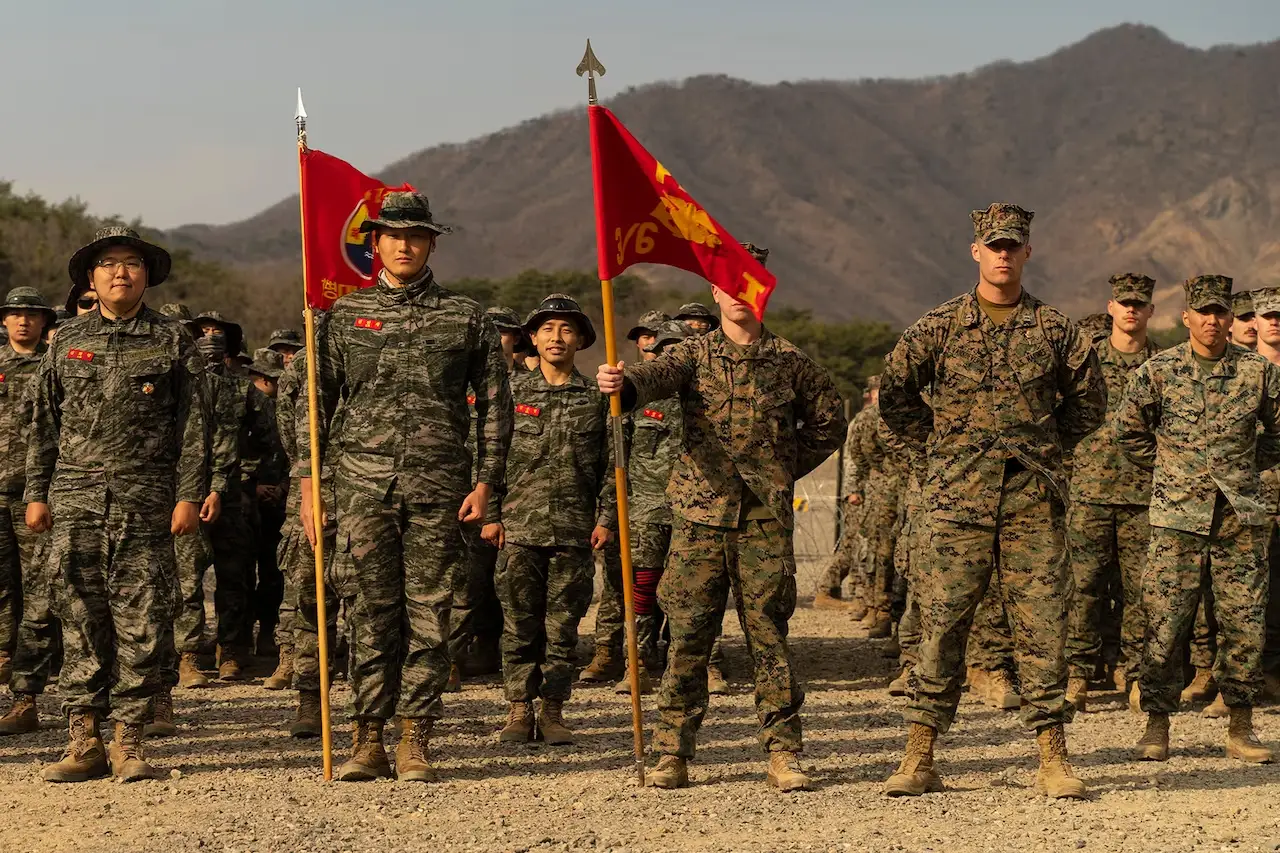
Korean demonstrates robust military prowess, with a Power Index of 0.1505, showcasing its advanced technologies and preparedness. South Korea maintains a robust military presence. In the assessments conducted by Global, South Korea secured a position within the top five in categories such as aircraft fleet strength, armored combat vehicle fleet strength, and helicopter capabilities. As of January 2023, the nation boasted a substantial arsenal comprising over 133,000 vehicles and 739 helicopters, including 112 assault helicopters. In summary, Global Firepower attributed a Power Index score of 0.1505 to South Korea, highlighting the country’s substantial military capabilities.
8. Japan
- Defense Budget: Approximately ¥5.4 trillion
- Active Military Personnel: Around 250,000
- Amphibious Capabilities: Developing with helicopter carriers
- Cybersecurity Initiatives: Strengthening capabilities
Japan’s military capabilities are evolving in response to regional security challenges. Recent changes in defense policy allow Japan to play a more active role in collective security efforts. Investments in amphibious capabilities, including helicopter carriers, demonstrate Japan’s commitment to adapting to modern threats in the Asia-Pacific region.
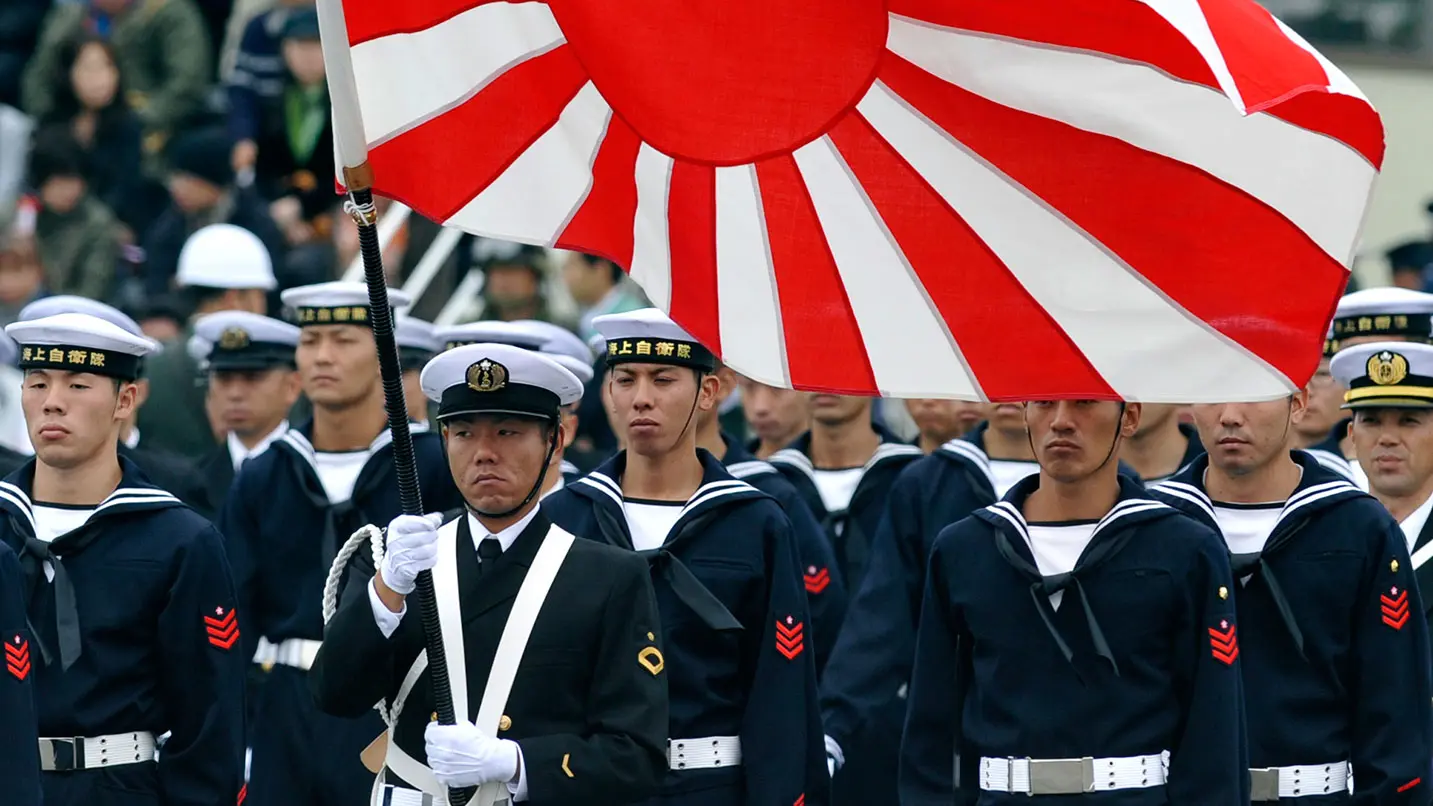
Japan secured the eighth position with a power index of 0.1711, maintaining a well-equipped and technologically advanced military force. As of January 2023, Japan’s military strength was highlighted by a significant arsenal, boasting over 1,400 military aircraft and a vast fleet of more than 111,000 vehicles. This extensive display of power resulted in a noteworthy Power Index score of 0.1711, showcasing Japan’s impressive military prowess, according to assessments by Global.
Also, read: Top Ten Bill Gates Books That He Recommends
9. Germany
- Defense Budget: Approximately €50 billion
- Active Military Personnel: Around 180,000
- Leopard 2 Main Battle Tanks: Over 300
- Cyber Command: Established for digital defense
Germany’s military strength is integral to NATO’s collective defense and European security. Recent efforts focus on modernizing armored forces and enhancing cyber capabilities. Germany’s commitment to a collective European defense underscores its role as a stabilizing force in the region.

Germany, historically a pacifist giant, is awakening its inner defender. Modernizing with precision tanks, air defense systems, and elite units, the Bundeswehr sheds its past for a high-tech future. Balancing modernization challenges with budgetary limitations and US tech dependence, Germany aims to become Europe’s best-equipped force, leading regional defense and assuming greater responsibility within NATO. This rising titan’s impact echoes across the continent, reshaping European security and the global balance of power.
10. Turkey
- Defense Budget: Approximately $20 billion
- Active Military Personnel: Over 400,000
- Indigenous Drone Technology: Advancements in unmanned systems
- Regional Involvement: Active participation in Middle East conflicts
Turkey’s military strength is characterized by its strategic location and regional influence. Recent advancements include the development of indigenous drone technology, enhancing its capabilities for both domestic defense and regional operations. Turkey’s active involvement in conflicts in the Middle East showcases its commitment to regional stability.
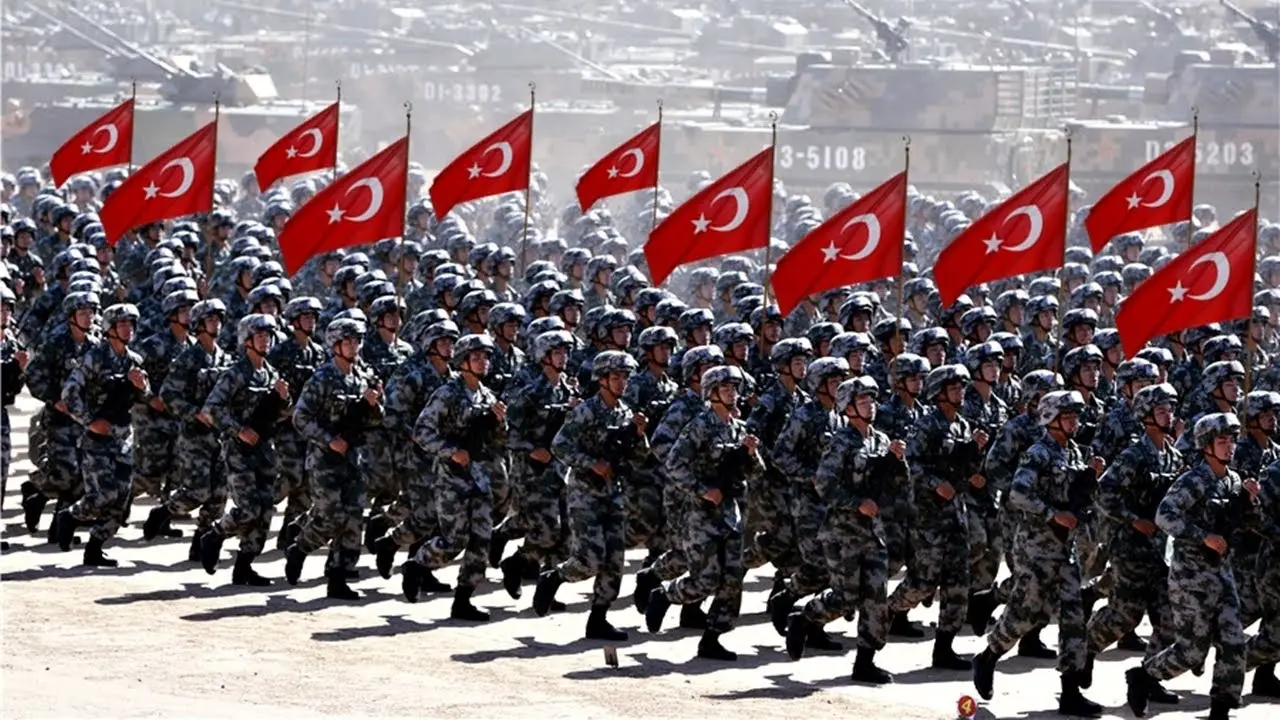
Turkey, a regional force with ambition, boasts a large, well-equipped military fueled by a burgeoning drone industry and indigenous weapon development. Its navy patrols the Mediterranean, while its land forces grapple with regional tensions. However, dependence on foreign technology and simmering disputes with neighbors cast shadows on its path to true military independence. Can Turkey overcome these challenges and solidify its position among the world’s top ten? Only time will tell.
FAQs: Strongest Army in the World
Q. How is military strength measured globally?
Military strength is assessed through a combination of factors, including defense budgets, technological capabilities, manpower, and strategic alliances. These metrics collectively determine the rankings of the Top Ten Strong Armies.
Q. Do alliances significantly impact a country’s military ranking?
Yes, alliances play a crucial role. Strategic partnerships enhance a country’s collective security and contribute to its ranking among the Top Ten Strong Armies.
Q. What role does technological innovation play in military dominance?
Technological innovation is a key determinant of military dominance. The ability to adopt cutting-edge technologies contributes to the strategic advantage of the Top Ten Strong Armies.
Q. How often are the rankings of the Top Ten Strong Armies updated?
Military rankings are typically updated annually, taking into account shifts in defense budgets, technological advancements, and geopolitical dynamics.
Q. Is economic strength directly correlated with military power?
Economic strength and military power often go hand in hand. Robust economies provide the financial resources needed to sustain and advance a strong military force.
Q. How do the Top Ten Strong Armies contribute to global security?
These military forces contribute to global security through deterrence, participation in peacekeeping missions, and collaboration in addressing common security challenges.
Conclusion: The Final Words
Determining the strongest army in the world is a complex task that involves numerous factors. While military might often hinges on factors like technological advancements, troop size, and budgetary allocations, it’s essential to consider other elements such as geopolitical influence, logistical capabilities, and overall combat effectiveness. While some nations consistently top the lists of the strongest armies, it’s crucial to remember that military power is a fluid concept that can shift over time due to various factors, including political changes, economic fluctuations, and technological breakthroughs. Ultimately, the “strongest” army may be the one that can effectively achieve its strategic objectives in a given context, demonstrating a combination of military prowess, diplomatic acumen, and intelligence capabilities.

